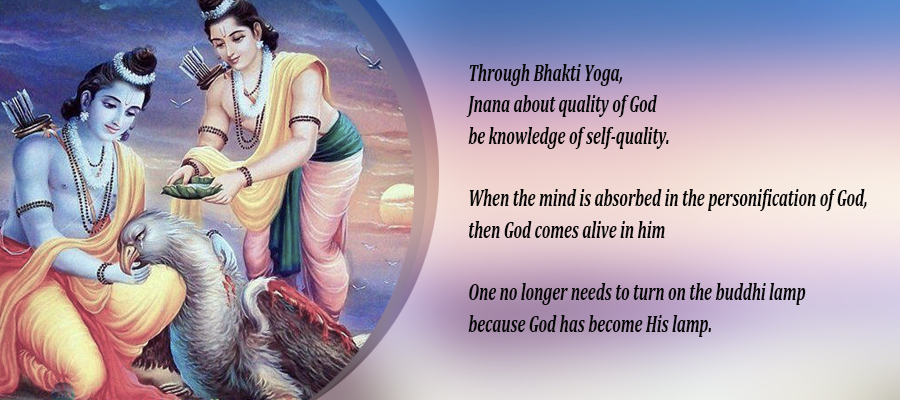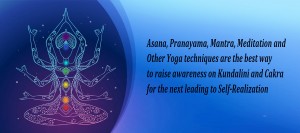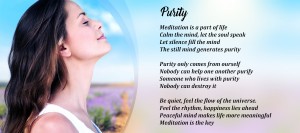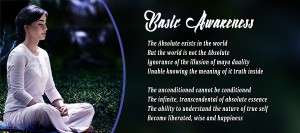In Uttara Kanda, the last chapter of Ramacharitamanas, Kaka Bhusundi, the enlightened crow, is explaining to Garuda, the king of birds, the distinction between Jnana and Bhakti. We saw that the lamp of consciousness was lit by buddhi, the higher mind, with the flame of the fire of yoga, thus illumining the heart space so that the knot of spirit and matter could be seen. But as soon as the knot began to untie, Maya, the power of delusion, reacted. Being the queen of the manifest dimension, Maya wants all her subjects to remain under her dominion in the material world. If anyone tries to escape, she sends forth her attendants in the form of the riddhi and siddhi. Riddhi is the material attainments, all the things that you ever wanted to acquire or achieve in life. Siddhi are the psychic attainments and powers which are so alluring to yogic practitioners. The job of the riddhi and siddhis is to distract buddhi and put out the light, so that the knot remains firmly lied and the jiva, the individual, thus remains under the dominion of Maya.
Even if buddhi is able to somehow ignore or deflect the riddhi and siddhis, Maya again sends other officers in the form of sensorial impressions to which we are ever susceptible. We may be able to ignore the senses for some time, but we cannot ignore them all the time. Even in the state of samadhi the senses can become very powerful distracters. Maya realizes this and blows the wind of the senses right into the heart space, so that buddhi is diverted and the light goes out. In this way the state of illumination, wherein the knot could be untied, is lost. So it happens on the path of jnana; we lose our chance again and again because these obstructions arise, distracting the mind and making the knot impossible to untie.
This is where the distinction between the two paths of jnana and bhakti becomes very obvious. So Kaka Bhusundi says (Uttarkanda 118), “When the light of buddhi is thus extinguished by the obstructions of the riddhi and siddhis and the sensorial blasts, the soul continues to experience all the manifold kleshas or afflictions of transmigration.” Why? Because the soul, although free in itself, remains tied to the material plane by its identification with the body and the sensory objects, and is thus unable to realize its own unlimited nature. Thus, birth after birth, it experiences all the sufferings of transmigration, which relate to each body, with each successive birth. Maya, the deluding potency of God, is exceedingly insurmountable. We cannot get over, under or around her. So Kaka Bhusundi says, “Maya is like an ocean which no one can cross.”
Viveka
Difficult to explain, difficult to understand and difficult to attain by practice is Viveka, or discriminating wisdom. This is because Viveka is a quality of the higher mind and is not attainable by reading, hearing or even by any kind of practice. It is the product of a transformation that can only take place when all the right conditions come together. The lamp is filled with the ghee of Viveka and burns in the heart space upon entering a higher state of meditation. Thus Viveka manifests its luminous potentiality after Dharana, in the state of dhyana. However, it is difficult to stay in the higher stages of meditation; we have to come out of them and again associate with the world. Being close to the pure spirit, Viveka can discriminate between atman and the lower states of mind and consciousness. But while interacting in the world, in our different activities and roles, the light of Viveka does not shine and we lose this perspective that sees both the manifest and the unmanifest at the same time. So to keep that light of Viveka burning constantly, even to understand it in the true sense, is not easy. We may understand this state intellectually, but to know it experientially is another matter. Even if by any lucky chance one succeeds in attaining Viveka, still many obstructions block the continuity of this discriminating awareness.
Therefore, he describes the discriminating knowledge of Viveka as ‘the razor’s edge’. It is also referred to as ‘the middle path’, and in yoga, we speak of it as the Drashta or Sakshi bhava. In walking the razor’s edge, we must remember first that it is very sharp, so we may cut ourselves if we slip; and second that it is a very narrow path, so we can easily fall to one side or the other. How do we slip and fall? By identifying either with the internal thoughts, memories, and feelings that come up, which means that we fall to the left side or by identifying with the external associations, the roles, the relatives, the job, the house and so on, which means we fall to the right side. So, we can understand that many of us will probably be falling more than we will be walking on this razor’s edge.
One is apt to fall from the razor’s edge at any moment, but he who walks this path without losing his footing attains the supreme state of kaivalya, or liberation.” This describes the path of jnana yoga, of nirguna or nirakara dhyana, or formless meditation. Here the awareness is left unsupported and exposed to the wiles of Maya, while one meditates on the abstract concept of pure consciousness, which is shunya or empty. However, the unsupported awareness easily falls prey to any distraction or obstruction, and for this reason, the supreme state of kaivalya is said to be most difficult to attain by this path.
The Path of Bhakti in God’s Embodiment
On the path of bhakti, however, the awareness is never left unsupported. Rama is most fond of his bhaktas, and immediately spurns the distracting attentions of Maya.
We can easily identify in every way with that God who was born as a human being. We are also born as a man or a woman, so we can feel and understand the same things that he felt. In this way, the realization of kaivalya comes effortlessly by the worship of Rama, which is sakara dhyana, even against our will. By meditating on the form of God, the realization will come, even if we do not want it. We can meditate on the form of Lord Rama, Shiva or on any personal God, such as Lord Krishna, it does not matter. When we meditate on persona God, his form becomes the lamp. We see him in the form of light, but it is more than the light of a candle or a lamp. It is like the light of a thousand suns because it is the light of God.
Our light of buddhi or higher awareness, being individual, is limited and burns with a small flame. This small flame needs constant protection, otherwise, it goes out, whereas when we meditate on the form of God, the light is unlimited because God is limitless. In bhakti-yoga, our limited luminosity and focus is replaced by the unlimited luminosity of God, which is eternal. When we meditate in this way, our awareness remains unaffected by any obstructions, because it is totally absorbed in the infinitely luminous form of God, which is far more intense, absorbing and compelling than any sensorial or psychic distraction. In this way, kaivalya is reached effortlessly on the path of bhakti.
Water cannot be contained without a solid base, like a pot, a tank, or the earth beneath to hold it. If we pour water into a sieve, it will all flow straight back out again. The same thing happens when we try to meditate; all of our concentration and energy pours out through the holes, which are the distractions, whether internal or external. Our limited consciousness is like a sieve, full of holes. So, just as water cannot be contained without a solid base, in the same way, the bliss of self-realization cannot remain apart from devotion to God. Why? Because when we bring God inside and focus our mind totally on his form, all the holes are plugged up.
The personal form of God is easy for the mind to focus on and becomes constant and powerful support in meditation. Kaka Bhusundi says, “the wise devotees of Hari reject Mukti or liberation through the path of jnana and always remain enamored of bhakti.” They reject the path of abstract meditation on the pure consciousness, shunya or emptiness, and remain focused instead on the lovely form of God.
One with God
As soon as one attains devotion, ignorance or avidya, which is the root of all transmigration – birth, death, and rebirth – is destroyed without any effort or exertion. When God comes to dwell within the heart, we do not have to attain different states of concentration. We do not have to make intense efforts because a different principle comes into action. Instead of trying to focus, concentrate and purify the mind, the concentration is easily drawn inward by the love of God. This experience is so sweet, so nice, that the mind is absorbed spontaneously without making any kind of effort at all. This is the difference between jnana yoga or raja yoga and bhakti-yoga.
When the mind becomes absorbed in the form of God in this way, then God becomes alive within us. God does not remain as a picture or a piece of clay; he becomes real and lives in you. So it happens that God’s knowledge and qualities become your knowledge and qualities. Without studying and memorizing all the scriptures and philosophies, the higher knowledge comes to us spontaneously. Through the process of bhakti, all the knowledge of God unfolds within you as if it were our own. We do not need to light the lamp of buddhi in order to attain knowledge. God becomes the lamp and generates far more luminosity than your own little intellect could ever engender.
The unique approach to yoga
In Uttara Kanda, a unique approach is taken to yoga. Other theories on yoga begin with something that is physical, tangible, able to be acknowledged by the senses and by the mind. The processes of dealing with the body and mind acknowledged in hatha yoga and raja yoga are tangible and experiential, so one can commit oneself to them. Similarly, in karma yoga, the senses are involved, and in jnana yoga, intellect and logic. In this way, most of the yogas begin with something manifest that can be identified as a controlling factor in life, and that can be experienced, either through the senses or through the mind, whether gross or subtle.
However, the approach to yoga in Uttarkanda is unique because it begins not with the body as in hatha yoga, or with the mind as in raja yoga, but with a description of the nature of the soul, and the relationship of the soul with its source, which you may call God. The symbology used is also unique and very beautiful, such as the cow of sattwa and the milk of dharma. It symbolizes the sattwic nature which can be attained through a certain progression. In each stage, there is a particular attribute that is identified as a virtue, such as an equanimity, truthfulness or desirelessness. These sattwic attributes represent the nature of the spirit that is liberated, illumined and realized.
How the sattwic nature becomes embodied and we become subject to the pain of birth and death, and how we can attain freedom from this experience of pain is explained in an approach that is totally internal. It is a realization, not a practice. It is an awareness of divinity in which one lives. This is the concept which yogis have aspired to attain from Vedic times. Those who lived a yogic life and perfected yoga, and for whom yoga was everything, lived this concept of an internal sattwic life along with the physical and mental practices. Those who lived in this way were known as Brahma rishis, cosmic seers.
Not every yogi lived in the purity of sattwa. It was a very specialized path of yogic realization with the spirit free from the effect of Maya and the kleshas. This experience of freedom, while maintaining the individual identity, is the nature of a bhakta. A bird does not have to leave its body behind in order to fly. It flies with the body and thus defies the law of gravity. Similarly, the world still exists even when the spirit is free from its gravitational pull. When you are able to live in the world but are not bound to it, that is the state of a jivanmukta. All yogic sadhanas lead to this state, and this is the teaching of yoga in Uttara Kanda.





